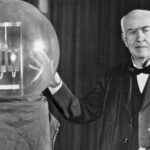In the vast tapestry of human history, there have been numerous pivotal moments that forever shaped the course of the world. From the ancient civilizations of the Americas to the audacious Viking explorations, and finally the legendary voyage of Christopher Columbus, the discovery of America holds an unparalleled significance. Delving into the intricate and interconnected narratives of these three subheads, this blog post aims to shed light on the Pre-Columbian Native American civilizations, the early Viking expeditions to North America, and ultimately, Columbus’s pivotal journey that would forever alter the course of history. Join us as we embark on a thrilling journey through time and explore the extraordinary tales that led to the discovery of America.
Pre-Columbian Native American Civilizations
The Pre-Columbian Native American civilizations were a highly complex and diverse group of societies that inhabited different regions of the Americas prior to the arrival of Christopher Columbus. These civilizations thrived for thousands of years, developing unique cultures, innovative agricultural practices, and impressive architectural achievements.
One of the most notable Pre-Columbian Native American civilizations was the Maya civilization, which flourished in Central America and southern Mexico from about 2000 BCE to 1500 CE. The Maya were known for their advanced knowledge of astronomy, sophisticated writing system, and monumental architecture, including the iconic step pyramids.
The Inca civilization, located in the Andes Mountains of South America, was another remarkable society. The Inca Empire, with its capital in Cuzco, stretched from present-day Ecuador to Chile, and was characterized by its extensive road network, efficient agricultural terracing, and intricate stone masonry. They also had a complex administrative system that allowed them to govern such a vast empire effectively.
| Maya Civilization | Inca Civilization |
|---|---|
| 1- The Maya civilization is renowned for its advanced knowledge of astronomy. 2- They developed a sophisticated writing system known as hieroglyphics. 3- The Maya built impressive step pyramids as ceremonial and administrative centers. | 1- The Inca civilization thrived in the Andes Mountains of South America. 2- They had an extensive road network connecting different parts of their empire. 3- Inca agriculture utilized efficient terracing techniques to maximize crop yields. |
Another significant civilization was the Aztec Empire, located in present-day Mexico. The Aztecs were skilled warriors and expanded their empire through conquest. They built the magnificent city of Tenochtitlan, which served as their capital and was renowned for its grand temples and intricate canals.
Early Viking Explorations To North America
The early Viking explorations to North America are a fascinating part of history that often goes overlooked. While Christopher Columbus is widely credited with discovering America, it was actually the Vikings who first set foot on North American soil centuries before him. The Vikings, also known as Norsemen, were seafaring people from the Scandinavian region, particularly from what is now modern-day Norway, Sweden, and Denmark. They were renowned for their sailing skills and adventurous spirit, which led them to explore new lands and establish temporary settlements across the North Atlantic.
The first recorded Viking voyage to North America occurred around the year 1000 AD, led by the famous Norse explorer Leif Erikson. Leif Erikson, the son of Erik the Red, is believed to have landed in present-day Newfoundland, Canada. This momentous journey was made possible by the Vikings’ remarkable navigation techniques and sturdy longships which allowed them to traverse great distances across treacherous waters.
It is intriguing to think about the motives that drove the Vikings to embark on such perilous journeys. Although the exact reasons are unclear, some historians speculate that the Vikings were primarily driven by the desire for new trade routes and to expand their sphere of influence. Others suggest that the allure of adventure and the search for fertile lands played a significant role in these explorations. Regardless of their motivations, the Vikings’ expeditions to North America marked an important milestone in human exploration and furthered our understanding of the vastness of the world.
Moreover, the Viking explorations to North America have left behind tangible evidence of their presence in the form of archaeological artifacts. Archaeological sites such as L’Anse aux Meadows in Newfoundland provide compelling proof of Norse settlement in North America. Excavations at L’Anse aux Meadows have uncovered the remains of Viking-style buildings, furnaces, and a variety of Norse artifacts, confirming the Vikings’ presence on these distant shores.
| Artifact | Description |
|---|---|
| Thor’s Hammer Pendant | A small, intricately carved pendant depicting Thor’s hammer, a symbol of protection and strength. |
| Whetstone | A sharpening stone used by the Vikings to maintain the sharpness of their weapons and tools. |
| Spindle Whorl | A round disc with a central hole used in spinning fibers into yarn, providing insight into the daily life of Norse settlers. |
The Viking explorations to North America, though lesser-known, are a testament to the adventurous spirit and maritime skills of these Norse seafarers. Their journeys not only expanded their horizons but also contributed to the collective knowledge of humankind. While Christopher Columbus’s voyage is often hailed as the discovery of America, it is important to recognize the Vikings’ significant role in uncovering this continent long before him. These early Viking explorations remind us of the determination and curiosity that have driven humans to explore and discover new frontiers throughout history.
Christopher Columbus’s Voyage And The Discovery Of America
Christopher Columbus, an Italian explorer, is credited with the discovery of America. Born in Genoa, Italy, in 1451, Columbus was convinced that he could find a new and faster route to reach the prosperous lands of Asia by sailing westward. With the support of Spanish monarchs, Queen Isabella and King Ferdinand, Columbus set out on his historic journey in 1492. His expedition, consisting of three small ships – the Santa Maria, the Pinta, and the Niña, faced numerous challenges and hardships during the voyage. However, on October 12, 1492, after months of sailing across the vast Atlantic Ocean, Columbus and his crew finally spotted land, which he believed to be the East Indies.
However, it was later revealed that Columbus had actually stumbled upon the continents of North and South America. The land he discovered was inhabited by various indigenous peoples, who had been living there for thousands of years. These native civilizations, often referred to as Pre-Columbian Native American civilizations, had developed complex societies and cultures. They had established advanced agricultural systems, built impressive cities, and created remarkable artistic and technological achievements.
The arrival of Columbus and other European explorers in America had a profound impact on the native populations. The encounters between the Europeans and the native peoples led to significant cultural exchanges, but also to conflicts and the eventual decline of many indigenous civilizations. The European colonization brought about drastic changes in the Americas, including the establishment of European colonies, the introduction of new diseases, and the transatlantic slave trade.
| Exploration | Discovery | Impact |
|---|---|---|
| Christopher Columbus | 1492 | Significant cultural exchanges and conflicts |
| Vikings | 10th century | Limited impact |
| Pre-Columbian Native American civilizations | Thousands of years prior to Columbus | Transformed by European colonization |












